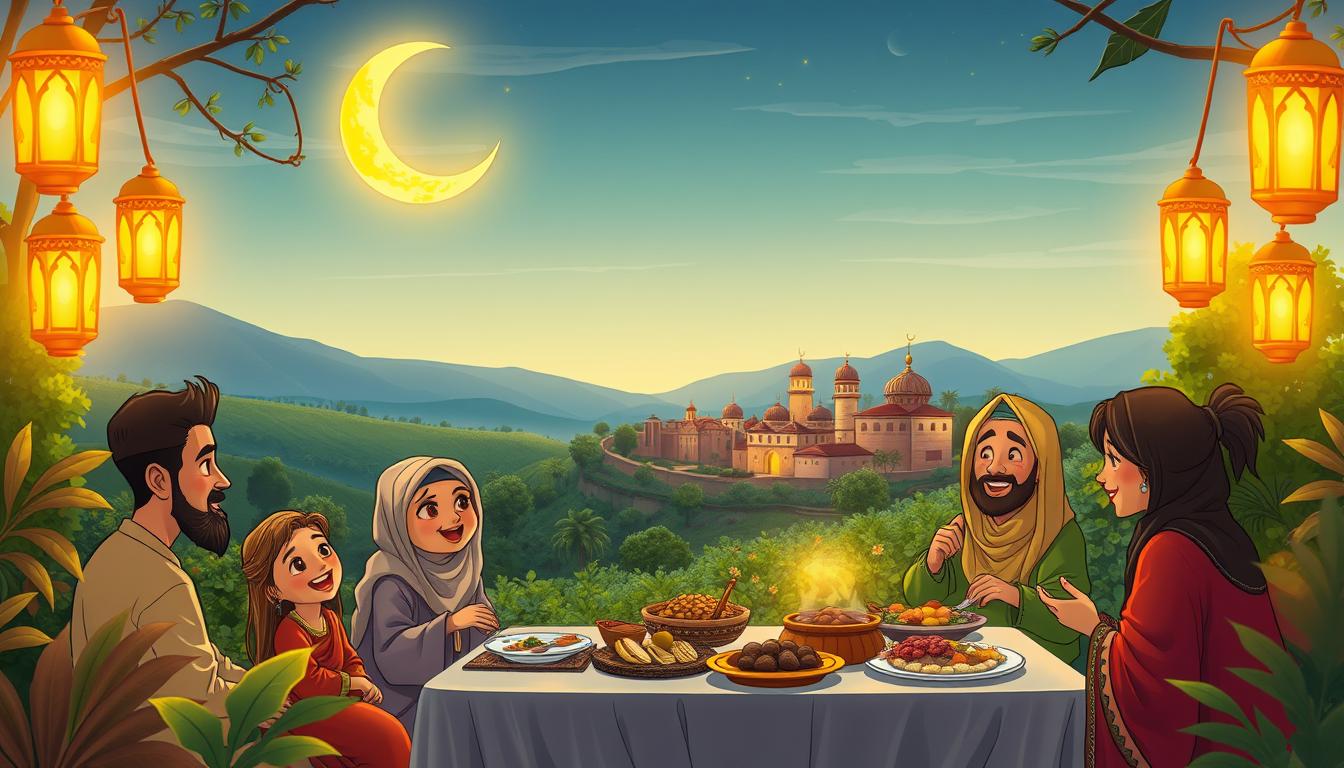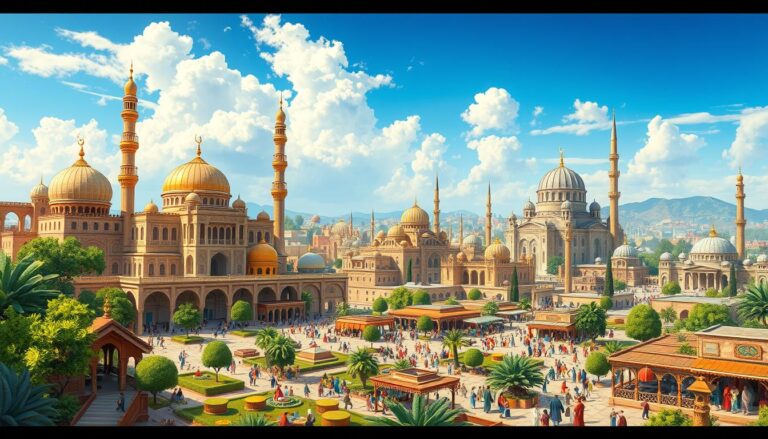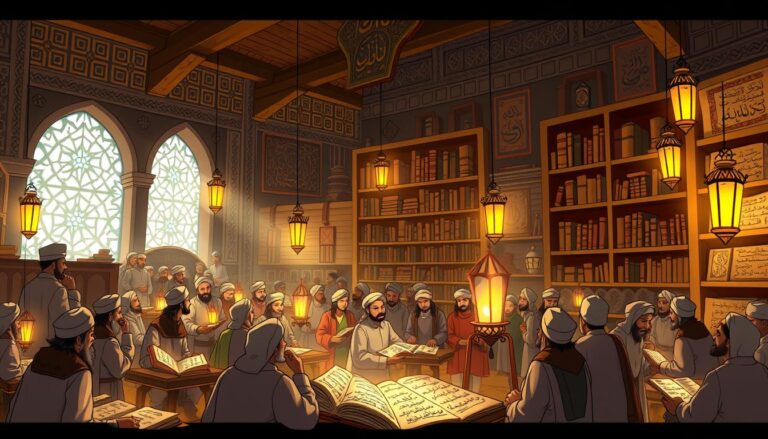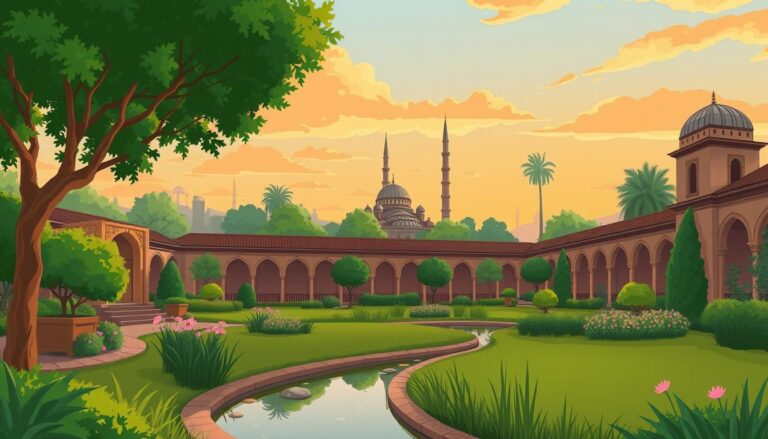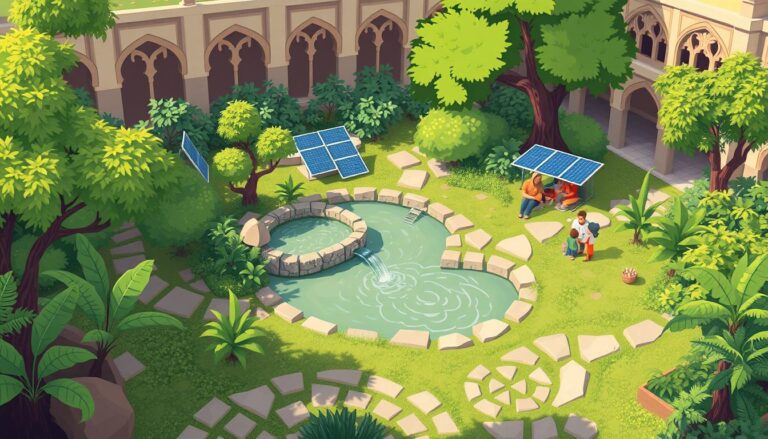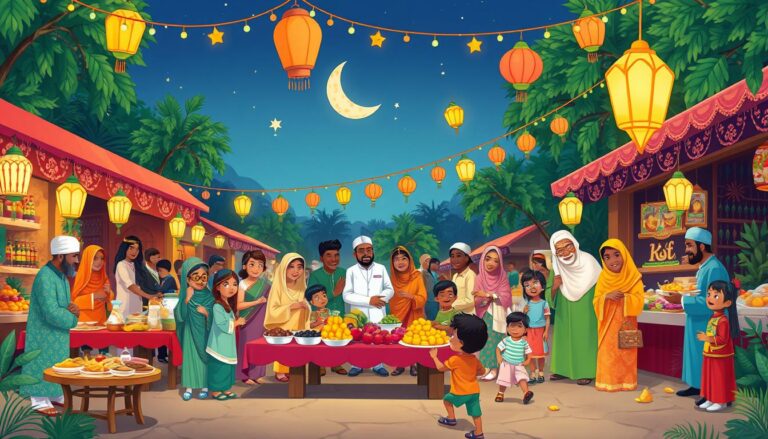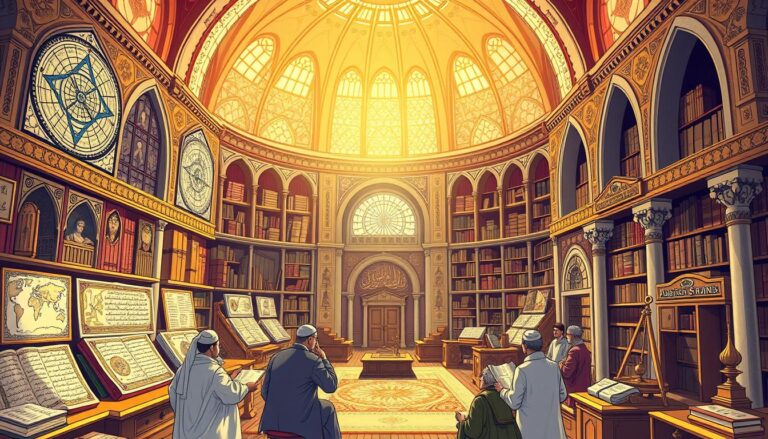The Spiritual Meaning Behind Islamic Holidays
Have you ever wondered why Islamic holidays seem to move around the calendar each year? This unique characteristic is just one aspect of the rich spiritual tapestry that makes up Muslim traditions and faith journeys. Islamic holidays, deeply rooted in spiritual significance, offer a window into the heart of Islam and its followers’ devotion.
From the month-long fast of Ramadan to the joyous celebrations of Eid, each Islamic holiday carries profound meaning. These observances aren’t just dates on a calendar; they’re pivotal moments in a Muslim’s faith journey. They offer opportunities for reflection, gratitude, and spiritual growth.
As we delve into the world of Islamic holidays, we’ll uncover the wisdom behind their timing, the depth of their traditions, and the unity they foster among believers worldwide. Whether you’re a curious observer or a practicing Muslim, understanding these holy days can enrich your appreciation of Islamic culture and spirituality.
Key Takeaways
- Islamic holidays follow a lunar calendar, shifting annually
- Each holiday holds unique spiritual significance
- Ramadan and the two Eids are major observances
- Holidays promote reflection, gratitude, and community
- Understanding these days enhances cultural appreciation
Understanding the Islamic Calendar and Its Significance
The Islamic calendar, also known as the Hijri calendar, is crucial for over 1.8 billion Muslims. It guides religious events and historic anniversaries. It’s different from the Gregorian calendar used by many.
The Lunar-Based Hijri Calendar
The Hijri calendar has 12 lunar months, making a year either 354 or 355 days. This means Islamic holidays move through the seasons over time. The current year is 1446 AH, marking 1,446 lunar years since the Prophet Muhammad’s migration.
Importance of Moon Sighting in Islamic Holidays
Moon sighting is key to starting Islamic months and holidays. It ensures events like Eid al-Fitr and Eid al-Adha are celebrated at the right time. This practice brings unity to Muslims worldwide.
Shifting Dates and Their Spiritual Implications
The Hijri calendar’s shorter year means holidays move through the seasons. This change brings spiritual benefits, allowing Muslims to experience different climates during religious observances. It shows the faith’s universality and adaptability.
Four months in the Islamic calendar are sacred: Muharram, Rajab, Dhul Qida, and Dhul Hijjah. These months are for spiritual reflection and peace. This aspect of the lunar calendar enriches the Muslim faith journey, connecting believers to tradition and devotion.
Ramadan: A Month of Fasting, Reflection, and Spiritual Growth
Ramadan is the ninth month of the Islamic calendar and is very important for Muslims. It’s a time for spiritual growth and purification. During Ramadan, Muslims fast from dawn to sunset, giving up food, drink, and other needs.
The fasting lasts 29 to 30 days, with the start date changing each year. In 2024, Ramadan starts around March 10 and ends on April 9. The fasting times change, starting between 5:46 a.m. and 6:48 p.m. at the beginning and shifting to 4:52 a.m. and 7:21 p.m. by the end.
Ramadan is more than just fasting. It’s a time for more prayer, giving to charity, and self-reflection. Muslims believe this month is when the first verses of the Qur’an were revealed to Prophet Muhammad. The Night of Power, Laylat ul-Qadr, is seen as especially blessed, with the Qur’an calling it “better than a thousand months.”
Fasting teaches us the value of patience and gratitude. It’s a time to purify our hearts and strengthen our connection with Allah.
Fasting is required for adult Muslims, but there are exceptions for those who are ill, traveling, or unable to fast safely. The month ends with Eid al-Fitr, a celebration of the end of fasting and the spiritual journey of Ramadan.
Eid ul-Fitr: Celebrating the End of Ramadan with Joy and Gratitude
Eid al-Fitr marks the end of Ramadan, a month of fasting and reflection. It’s a three-day festival of joy and gratitude. Muslims come together to celebrate and share in the festivities.
The Spiritual Significance of Breaking the Fast
Breaking the fast is deeply meaningful for Muslims. It shows the end of a month of self-discipline and devotion. It strengthens community bonds and reinforces Ramadan’s spiritual lessons.
Communal Prayers and Festivities
Islamic festivities start with special morning prayers at mosques. Families and friends gather for meals, gifts, and sweets. Many countries celebrate Eid al-Fitr as a national holiday.
Acts of Charity and Goodwill
Charity is key in Eid al-Fitr. Muslims give to those in need through Zakat al-Fitr. This act shows compassion and community support. It encourages forgiveness and harmony among people.
“Eid al-Fitr is a time for joy, reflection, and renewed commitment to righteousness.”
Eid al-Fitr is a significant event in the Islamic calendar. It happens on the first day of the tenth month. It’s a time to celebrate Allah’s provision and strengthen faith and relationships.
The Hajj Pilgrimage: A Journey of Faith and Unity
The Hajj pilgrimage is a key part of Islamic faith. It draws millions to Mecca each year. This journey shows Islamic unity, bringing people together in a shared spiritual experience.
In 2019, nearly 2.5 million Muslims went on the Hajj. It shows how important it is worldwide. The pilgrimage happens in Dhul-Hijjah, the last month of the Islamic calendar, lasting five to six days.
The Kaaba is at the heart of the Hajj. It’s Islam’s holiest site. Pilgrims circle it seven times, showing their devotion to Allah. They also walk or run between hills, remembering Hajar’s search for water.
“The Hajj washes away previous sins as water washes away dirt.” – Prophet Muhammad
The journey is tough, both physically and spiritually. Pilgrims face intense heat and hard conditions. They show their commitment to faith. During Hajj, Muslims can’t argue, cut hair, or do worldly things. They focus on their spiritual connection.
The Hajj ends with Eid al-Adha, the “Feast of Sacrifice.” Muslims celebrate by sacrificing animals and sharing meat with others. This shows the spirit of charity and community in Islam.
Eid ul-Adha: Commemorating Sacrifice and Devotion
Eid ul-Adha is a big Islamic holiday celebrated for three to four days. It marks the end of Hajj, the fifth pillar of Islam. It also remembers Prophet Abraham’s sacrifice.
The Story of Prophet Abraham’s Sacrifice
The Qur’an tells us about Prophet Abraham’s readiness to sacrifice his son for God. This act of faith is at the heart of Eid al-Adha. It shows Muslims’ deep devotion to their beliefs.
The Ritual of Qurbani and Its Spiritual Meaning
Qurbani, or animal sacrifice, is a key part of Eid al-Adha. Muslims sacrifice animals like sheep, goats, cows, or camels. It shows their submission to God and thanks for His blessings.
Sharing and Caring: Distribution of Sacrificial Meat
The meat from Qurbani is shared in three ways. One part goes to family, one to friends and relatives, and one to those in need. This act of sharing shows the importance of kindness and helping others in Islam.
- Muslims often wear new clothes and exchange gifts during Eid ul-Adha
- Special prayers are held at mosques and Islamic centers globally
- The holiday fosters unity among Muslims worldwide
Eid ul-Adha reminds us of faith, sacrifice, and helping others. It brings Muslims together from all over, celebrating their shared values of devotion and generosity.
The Spiritual Meaning Behind Islamic Holidays
Islamic holidays are deeply meaningful for Muslims everywhere. They are more than just celebrations. They are key parts of Islamic spirituality and faith.
During Ramadan, Muslims fast and pray more. The last ten days are especially important. Many believe Laylat al-Qadr, a night better than 1,000 months, happens during this time.
Eid al-Fitr, at Ramadan’s end, is a three-day joy. It starts with the new moon sighting. People clean their homes, cook special treats, exchange gifts, and wear new clothes. They also practice zakat, or charity.
Eid al-Adha, a four-day celebration, honors Prophet Ibrahim’s devotion. It happens during the Hajj pilgrimage. It teaches sacrifice and sharing. Both Eids encourage spiritual growth through prayer, kindness, and family time.
“Eid Mubarak” – A common greeting exchanged during Islamic festivals, wishing blessings and happiness.
These holidays are spiritual milestones for Muslims. They help reflect on faith, practice charity, and build community. They give a sense of purpose and well-being through social connections and religious practices.
Islamic New Year and Ashura: Reflecting on History and Faith
The Islamic New Year, also known as Hijri New Year, starts the lunar Islamic calendar. It’s set to begin on July 7th, 2024, marking the start of 1446 AH. The exact date can vary slightly in different countries, depending on when the new crescent moon is seen.
The Islamic calendar started in 622 CE with the Prophet Muhammad’s move from Mecca to Medina. It has 12 lunar months, adding up to 354 or 355 days. This is 11 to 12 days less than the Gregorian calendar, so the New Year falls on different dates each year.
Muharram, the first month of the Islamic calendar, is one of the four sacred months. The tenth day of Muharram is Ashura, a day of great importance, especially for Shia Muslims. It remembers the martyrdom of Husayn ibn Ali in the Battle of Karbala in 680 CE.
Muharram observances differ among Muslim communities. Many give to charity, fast, and pray. Shia Muslims often take part in mourning rituals to honor the tragedy of Karbala. The Islamic New Year is a time for reflection, spiritual growth, and coming together as a community.
- Attend religious activities and offer prayers
- Donate to charity
- Fast on the Day of Ashura
- Engage in acts of piety and remembrance
In many Muslim-majority countries, the Islamic New Year is a public holiday. It brings unity and shared heritage through community activities and religious observances. Gift-giving is common, with popular items including fruit baskets, cheese boxes, and dates.
The Islamic New Year reminds us of our rich history and encourages us to start anew with faith and purpose.
Laylat al-Qadr and Mawlid an-Nabi: Nights of Spiritual Significance
Islamic spiritual nights are very important for Muslims all over the world. Laylat al-Qadr and Mawlid an-Nabi are two special nights. They are times for worship and deep thinking.
The Night of Power: Laylat al-Qadr
Laylat al-Qadr, or the Night of Power, is a very sacred time in Islam. It happens during the last ten nights of Ramadan. Muslims think this night is more valuable than a thousand months of prayer.
Sunni Muslims usually celebrate on odd-numbered nights, like the 21st, 23rd, 25th, 27th, or 29th of Ramadan. Shia Muslims focus on the 19th, 21st, or 23rd nights.
On this special night, many Muslims do extra prayers and recite the Quran. They also seek forgiveness. Some even go into spiritual retreat, called i’tikaf. The Quran’s Surah Al-Qadr talks about the night’s greatness, saying angels come down to Earth.
Celebrating the Prophet’s Birthday: Mawlid an-Nabi
Mawlid an-Nabi is the birthday of Prophet Muhammad. It’s celebrated on the 12th day of Rabi’ al-Awwal in the Islamic calendar. While not everyone celebrates, many Muslims come together on this day.
They recite poetry, sing hymns, and talk about the Prophet’s life and teachings. Some also do acts of charity to honor the day.
Both Laylat al-Qadr and Mawlid an-Nabi show the deep spiritual traditions in Islam. They give Muslims a chance to grow their faith and connect with Allah and His messenger.
Source Links
- Muslim Holy Days and Observances
- Islamic Holidays 2024: Their dates, customs and significance – Calendarr
- No title found
- The Islamic calendar: How does it work and why is it lunar?
- Islamic calendar
- Ramadan
- Ramadan Information: Understanding its Significance and Practice
- 7 Facts About Ramadan—Islam’s Holiest Month | HISTORY
- What is Eid al-Fitr and how do Muslims celebrate it? 6 questions answered
- The History and Meaning of Eid al-Fitr – Nursing Daddy
- The Hajj pilgrimage and why it’s significant for Muslims
- The Spiritual Journey of Hajj: A Personal Reflection
- Recapturing The Spirit Of Eid-ul-Adha: Spirituality Beyond Ritual
- Eid al-Adha: An Islamic Festival Commemorating Sacrifice, Marking the End of Annual Hajj
- Eid ul-Adha: A Celebration of Sacrifice and Spiritual Renewal
- The Origins and Practices of Holidays: Laylat al-Qadr & Eid al Fitr
- What is Eid al-Fitr? 6 questions about the holiday and how Muslims celebrate it, answered
- Islam Holy Days Calendar – Office of Religious and Spiritual Life
- Islamic New Year 1446 AH: A Unifying Event Across the Muslim World
- Islamic New Year: Traditions, Celebrations, and Prayer
- Night of Power
- provides you Dharma Gyaan online

